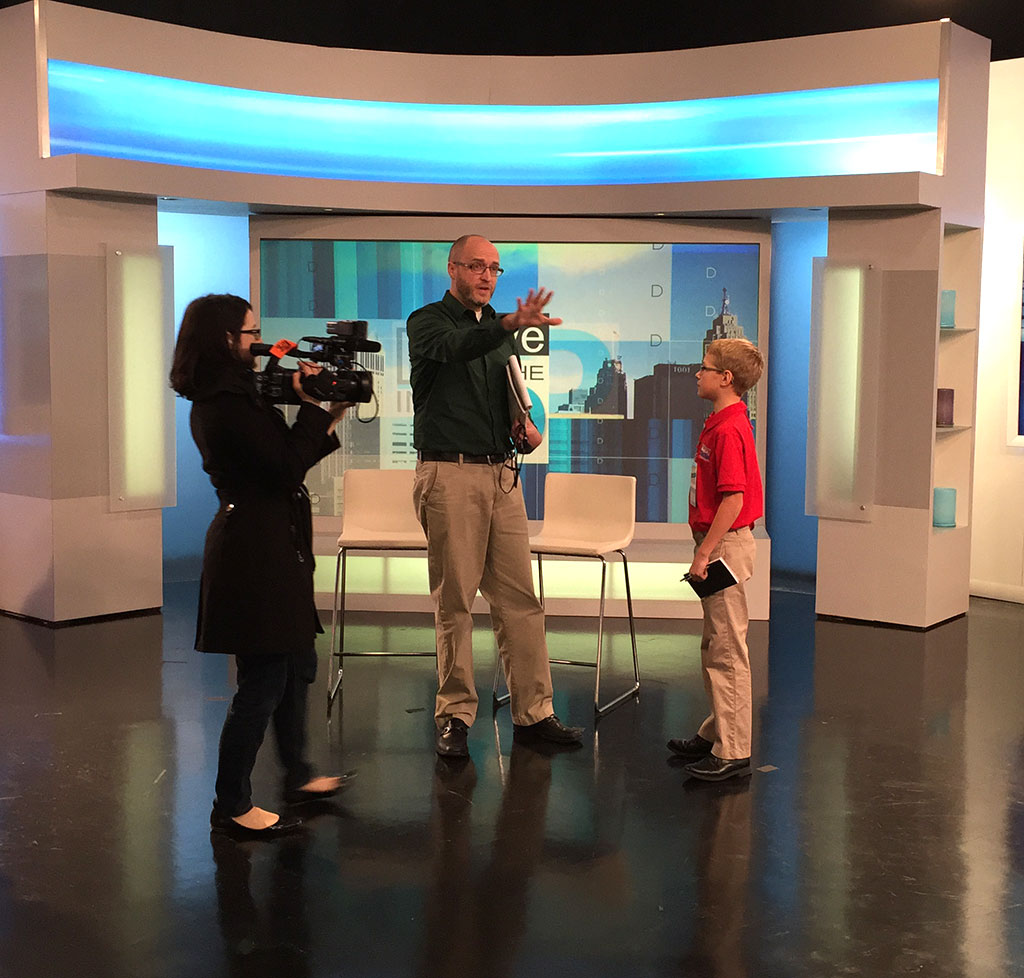KID REPORTERS’ NOTEBOOK
Live in the D

 There’s nothing simple about producing a TV news program. I found that out when I visited the set of “Live in the D,” a local news and talk show in Detroit, Michigan. The real story is behind the scenes, where strategy, coaching, and high-pressure decisions can make or break a newscast.
There’s nothing simple about producing a TV news program. I found that out when I visited the set of “Live in the D,” a local news and talk show in Detroit, Michigan. The real story is behind the scenes, where strategy, coaching, and high-pressure decisions can make or break a newscast.
On a recent Thursday, viewers turned on their televisions to see anchors Guy Gordon and Karen Drew sitting in a nice room, talking casually about a news story. But viewers didn’t see producer Jay Coleman about 20 feet away as he got a message that something was wrong. Coleman grumbled and looked at the script on his computer screen, highlighted part of it, and said, “Lets just delete it.” To the viewer, it was as if that part of the script was never there.
"QUIET, PLEASE!"
Throughout the broadcast, Gordon relied on his producer to tell him where to sit or stand. During a commercial break, there was a debate about whether Gordon should be in a scene trying on hats, with Gordon stepping in and out of camera view. A few seconds of panic and indecisiveness followed, and finally the producer told Gordon to jump onto the set only seconds before going live.
Gordon gets messages from his producer through a tiny earphone. With the push of a button, the producer decides who Gordon wants to talk to. Sometimes, a reporter might be distracted by a conversation in the control room. Unable to concentrate, the reporter will rip out the device, even on live TV.
In the control room, there are nine TV screens showing different angles from the many cameras being used. Two additional screens on the left are tuned to other local channels so that everyone can see what Channel 4’s competitors are showing. In the middle of all of the TV screens, there is one huge screen showing what the viewers are seeing at home. Coleman said, “We don’t care about anything else but what is shown on that screen.”
While being on TV may not make Gordon panic, that wasn’t always the case.
“I got over my nervousness by practicing doing live stories while driving my car on commutes,” Gordon said. “It made me feel more prepared and confident for any live breaking news.”
To kids who want to become TV reporters, Gordon says, “If you can handle getting up in front of a class, being on TV is not much worse.”
